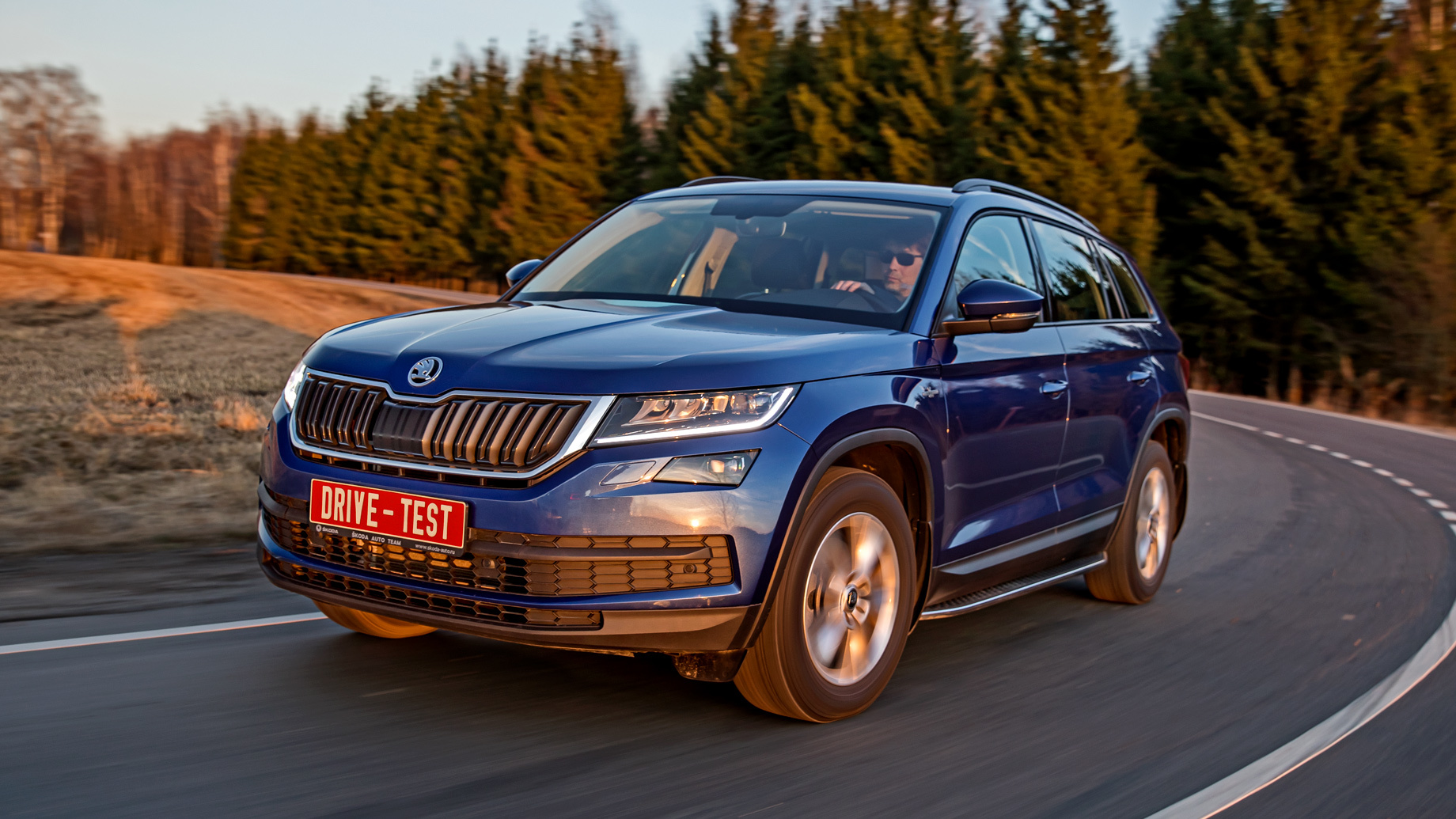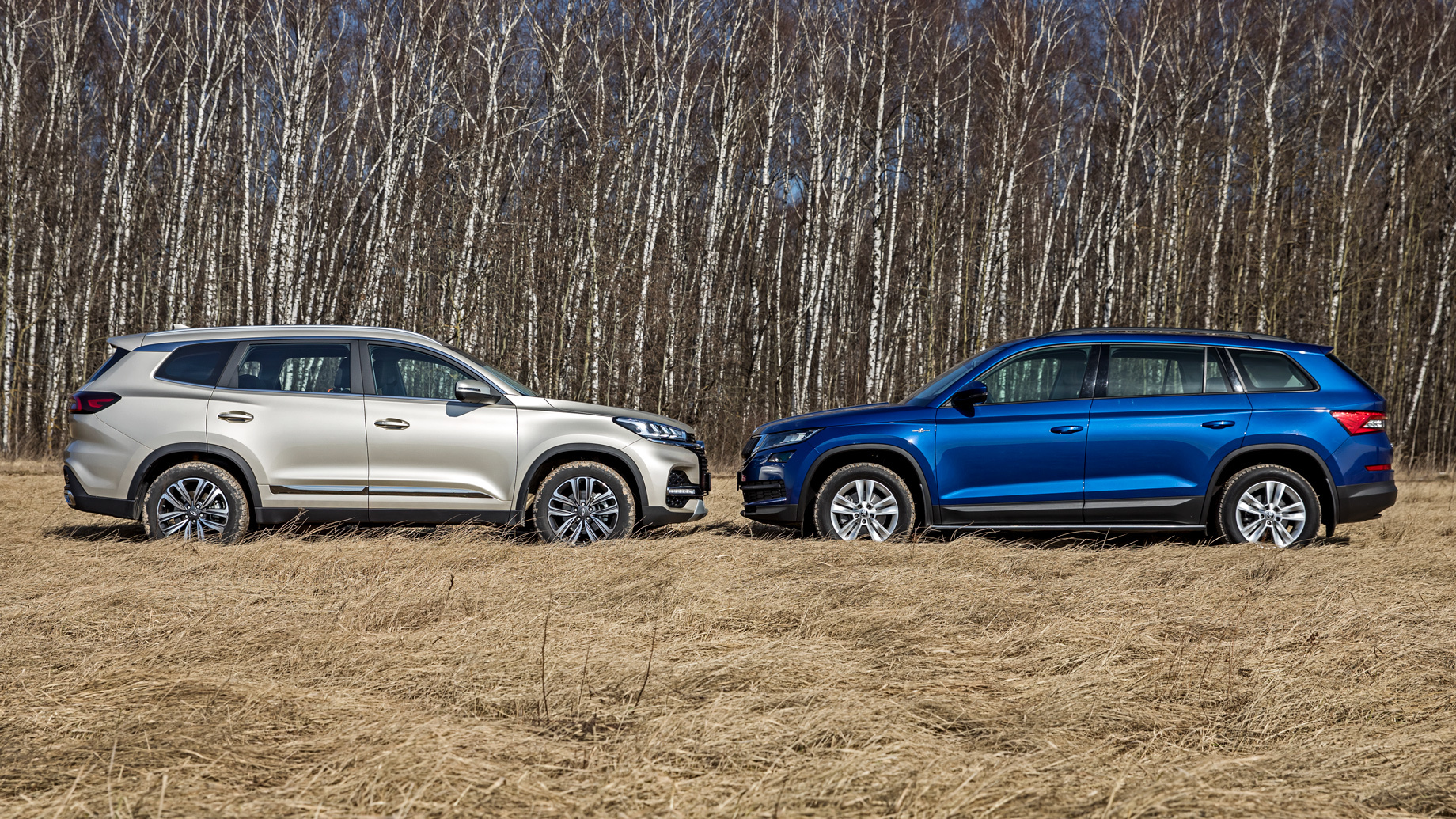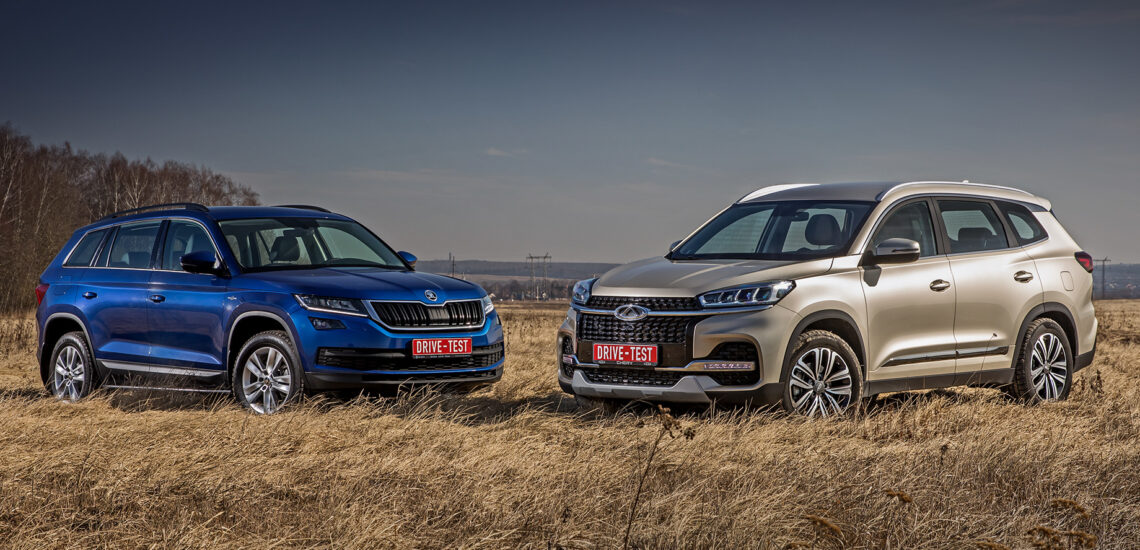Looking for a spacious family crossover with third-row seating? The Chery Tiggo 8 and Skoda Kodiaq are two popular choices in the midsize SUV segment. In this detailed comparison, we put both vehicles through their paces to help you decide which one deserves a spot in your driveway.
Chery Tiggo 8: Configuration and Trim Options
Unlike its Czech rival, the Chery Tiggo 8 keeps things simple at launch. Buyers won’t find an extensive configurator here. Instead, the Chinese crossover offers a straightforward approach:
- Engine: Single 170-horsepower turbocharged engine
- Transmission: CVT (continuously variable transmission)
- Drivetrain: Front-wheel drive only
- Trim level: Prestige package with all available options included
- Third-row seating: Standard
- Customization: Choice of body color only
The largest member of the Tiggo family measures 15.4 feet in length and features well-executed proportions with quality construction throughout.

Skoda Kodiaq: More Choices, More Complexity
The Kodiaq takes the opposite approach with an extensive configurator offering multiple engine options, transmissions, and trim levels. For this comparison, we tested two versions:
- Hockey Edition: Five-seat model with 17-inch wheels and manual seat adjustment
- Style version: Seven-seat configuration with electric seats for cargo and passenger evaluation
Interior Design and Ergonomics
Chery Tiggo 8 Cabin
Step inside the Tiggo 8 and you’ll find a generously appointed interior wrapped in leatherette. The heavy doors cover the sill completely, adding a premium feel. Notable features include:
- Adjustable steering column reach (unique among co-platform vehicles)
- Supportive seat with excellent lower-back profile
- Wide-coverage mirrors for improved visibility
However, the interior has some drawbacks:
- Physical buttons are scarce and undersized
- Touch controls for climate and audio require precise aiming
- Limited smartphone storage options
- Soft seat cushions provide inadequate hip support
Skoda Kodiaq Cabin
The Kodiaq’s interior prioritizes functionality and driver-focused ergonomics. Key advantages include:
- Near-ideal seating position
- Abundant physical buttons, each logically placed
- Intuitive climate, media, and driving mode controls
The main compromise involves visibility. The truncated mirror design and thick A-pillars create blind spots that require extra attention when maneuvering.
Second-Row Comfort and Space
Both crossovers deliver generous second-row accommodations with ample knee room and headroom. However, subtle differences emerge:
- Chery Tiggo 8: Slightly more overall space
- Skoda Kodiaq: Better seat profile and superior foot room; optional folding headrest “cheeks” to support sleeping passengers

Third-Row Seating: Marketing Hype vs Reality
Both vehicles offer 2+3+2 seating configurations, but neither excels at accommodating adults in the third row. Here’s the honest truth:
Skoda Kodiaq Third Row
- Available as an option (included in Family II pack with USB ports, tray tables, and three-zone climate control)
- Adults around 5’11” fit uncomfortably
- Requires sliding the second row forward, which causes rear passengers’ heads to contact the ceiling
Chery Tiggo 8 Third Row
- Standard equipment on the Prestige trim
- Marginally more space due to larger exterior dimensions
- Still cramped for adults; roof clearance is even tighter than the Kodiaq
Important safety consideration: In crossovers under five meters long, the 2+3+2 configuration is largely a marketing feature. The rear glass sits dangerously close to third-row headrests, raising serious concerns about rear-end collision safety—especially for children.
Powertrain Performance Comparison
Chery Tiggo 8: 2.0L Turbo with CVT
- Power output: 170 hp
- Peak torque: 250 Nm (arrives 500 rpm later than the Skoda’s 1.4 TSI)
- Character: Sluggish response below 2,000 rpm; smoothed throttle reactions
- CVT behavior: Linear power delivery at moderate speeds; simulated gear steps only in manual mode
- Sport mode: Retains soft responses, making it usable for daily driving
Skoda Kodiaq: 1.4L TSI with DSG
- Power output: 150 hp
- Peak torque: 250 Nm
- Transmission: Six-speed DQ250 dual-clutch with wet clutches
- Character: Feels quicker than the heavier-on-paper Tiggo 8
- Issues: Occasional jerks when transitioning from Reverse to Drive; some hesitation during aggressive downshifts
Despite its 20-horsepower disadvantage, the Kodiaq feels more responsive in real-world driving. However, drivers may wish for more power during highway overtaking maneuvers.

Ride Quality and Handling
Chery Tiggo 8 Driving Dynamics
Strengths:
- Excellent straight-line stability; ignores asphalt ruts
- Controlled body roll during direction changes
- Consistent, predictable behavior at the limit
- Energy-absorbent suspension despite firm tuning
Weaknesses:
- Overly viscous steering feel lacks feedback
- Sharp impacts from potholes and expansion joints transfer harshly to passengers
- Rear passengers suffer most from the firm multi-link suspension
Skoda Kodiaq Driving Dynamics
Strengths:
- Academically correct handling responses
- Precise steering with accurate turn-in
- Good composure on relatively smooth roads
Weaknesses:
- Narrow pedal spacing (easy to catch foot between gas and brake)
- Ride deteriorates significantly over larger potholes
- Chassis feels slightly flabby; unsprung mass vibrations noticeable
- Sudden understeer in aggressive cornering can surprise drivers
Market Performance and Value Proposition
The Skoda Kodiaq has dominated its segment, claiming the top spot among D+ crossovers and outselling rivals like the Mitsubishi Outlander and Nissan X-Trail. Key factors behind its success:
- Over 25,000 units sold in the previous year
- 54% sales growth compared to the prior period
- Local production enabling competitive pricing
- Wide range of engines, transmissions, and options
The Chery Tiggo 8 counters with a competitive price point targeting budget-conscious families. The manufacturer has also indicated plans for simplified configurations, potentially removing the third-row seats for buyers who don’t need them.

Final Verdict: Chery Tiggo 8 vs Skoda Kodiaq
Choose the Skoda Kodiaq if you prioritize:
- Responsive powertrain performance
- Precise, confidence-inspiring handling
- Extensive customization options
- Proven reliability and resale value
- Superior interior ergonomics

Choose the Chery Tiggo 8 if you prioritize:
- Lower purchase price
- Predictable behavior at the handling limit
- Simpler buying process with fully loaded standard equipment
- Slightly more interior space
- Better straight-line stability
Neither vehicle is perfect. The Kodiaq excels in everyday driving refinement but needs improved ride comfort. The Tiggo 8, while not matching the Skoda’s dynamics or polish, offers solid value and honest, predictable performance. For families on a budget who can overlook some compromises, the Chinese newcomer presents a compelling alternative to the established Czech favorite.
This is a translation. You can read the original here: https://www.drive.ru/test-drive/chery/skoda/5e9ef34cec05c4c27800001c.html

Published December 22, 2022 • 6m to read





